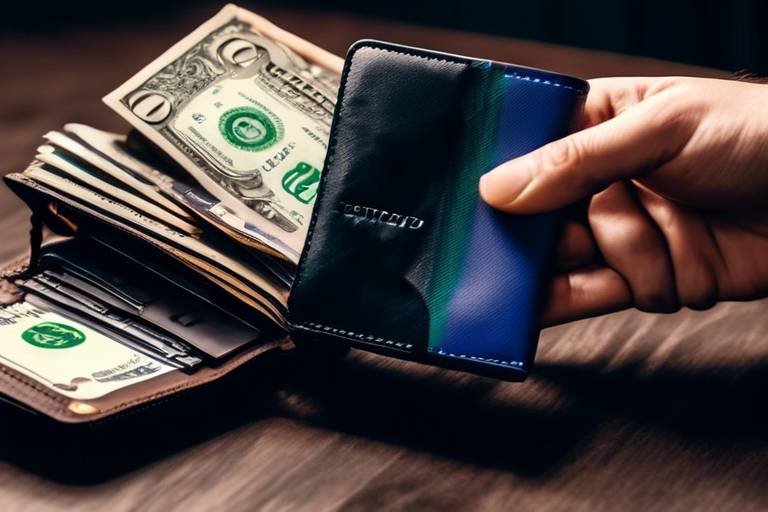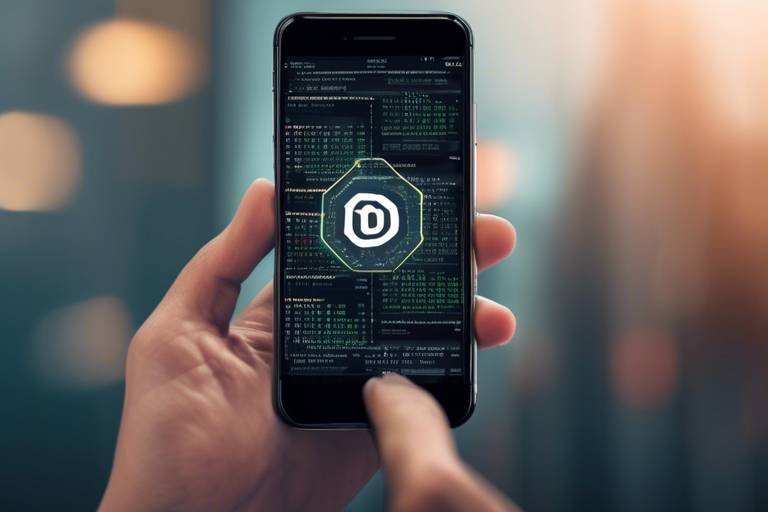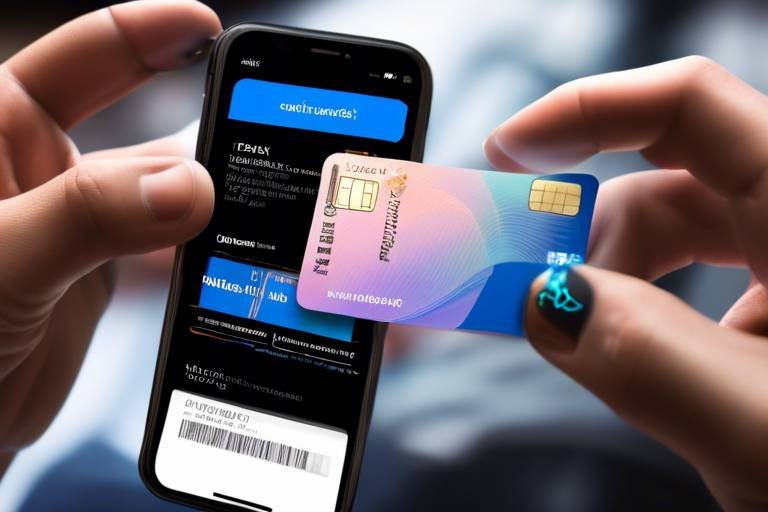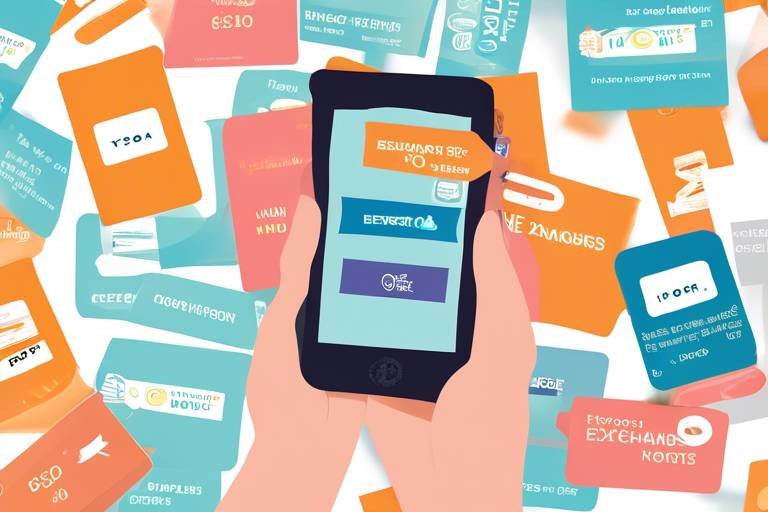The Role of Wallets in Enhancing User Engagement in Crypto
In the ever-evolving world of cryptocurrency, wallets play a crucial role in shaping user engagement. Think of crypto wallets as the gateway to the digital currency universe. They not only store your assets but also help you interact with the blockchain, making transactions and managing your portfolio. With the increasing popularity of cryptocurrencies, understanding how wallets enhance user engagement is essential. After all, who wouldn’t want a seamless experience while navigating through the complexities of digital currencies?
One of the primary functions of cryptocurrency wallets is to provide security. In a landscape rife with hacks and scams, users need to feel confident that their assets are safe. Wallets come equipped with various security features, such as encryption and two-factor authentication, which not only protect user funds but also build trust. When users feel secure, they are more likely to engage actively with their wallets, whether it's making transactions, trading, or exploring new cryptocurrencies.
Another significant aspect is transaction management. Wallets allow users to send, receive, and store various cryptocurrencies effortlessly. Imagine trying to juggle multiple currencies without a proper tool; it would be chaotic! Wallets streamline this process, making it easy for users to manage their digital assets. This ease of use encourages users to engage more frequently with their wallets, leading to a more vibrant crypto ecosystem.
Moreover, wallets facilitate access to an array of cryptocurrencies, enabling users to diversify their portfolios. This is particularly appealing for those who are looking to invest in multiple digital assets. When users have a convenient way to access various coins, they are more likely to explore and invest, which ultimately enhances their engagement with the crypto world.
In summary, the role of wallets in enhancing user engagement in crypto cannot be overstated. They serve as the foundation for security, transaction management, and access to diverse cryptocurrencies. As the crypto landscape continues to grow, wallets will undoubtedly evolve, offering even more features that cater to user needs. But what does this mean for the future of crypto wallets? Let's dive deeper into the types of wallets available and how they can impact user engagement.
Understanding why crypto wallets are essential for users is the first step in appreciating their role in enhancing engagement. The primary function of a wallet is to provide a secure place to store cryptocurrencies. Without a wallet, users would be unable to access their digital assets, making wallets a fundamental component of the crypto experience.
Additionally, wallets play a pivotal role in transaction management. They allow users to send and receive cryptocurrencies quickly and efficiently. Imagine trying to send money through a traditional bank without an account; it’s nearly impossible! Similarly, crypto wallets simplify the process of managing digital currencies, making it user-friendly and accessible.
The importance of wallets also extends to their ability to facilitate access to various cryptocurrencies. Users can explore different tokens, invest in promising projects, and diversify their portfolios—all from a single interface. This ease of access encourages users to engage more actively with their wallets and the broader crypto ecosystem.
There are several types of cryptocurrency wallets available, each catering to different user needs. Understanding these types can help users choose the wallet that best fits their lifestyle and engagement level. Here’s a brief overview of the main categories:
| Type | Features | Use Cases |
|---|---|---|
| Hardware Wallets | Enhanced security, offline storage | Long-term holdings |
| Software Wallets | Convenient, easy access | Frequent transactions |
| Mobile Wallets | On-the-go access | Everyday spending |
| Paper Wallets | Cold storage, offline | Secure long-term storage |
Each of these wallet types has its unique features and use cases, making it essential for users to choose wisely based on their engagement preferences and security needs. Whether you're a casual investor or a serious trader, there's a wallet out there for you.
- What is a cryptocurrency wallet? A cryptocurrency wallet is a digital tool that allows users to store, send, and receive cryptocurrencies securely.
- Are hardware wallets safe? Yes, hardware wallets are considered one of the safest options for storing cryptocurrencies due to their offline storage capabilities.
- Can I use multiple wallets? Absolutely! Many users opt for multiple wallets to diversify their holdings and enhance security.

The Importance of Crypto Wallets
When diving into the world of cryptocurrency, one of the first things you’ll encounter is the term crypto wallet. But what exactly is its significance? Think of a crypto wallet as your personal vault—just like you wouldn’t keep your cash lying around in your home, you wouldn’t want to leave your digital assets unprotected. Crypto wallets are essential for a myriad of reasons, primarily revolving around security, transaction management, and access to various cryptocurrencies.
First and foremost, the security aspect cannot be overstated. With the rise of cyber threats, having a secure wallet is crucial. Crypto wallets employ various security measures to keep your assets safe. For instance, they often use encryption to protect your private keys, which are necessary for accessing your funds. Without these keys, your cryptocurrency is as good as lost. Furthermore, wallets can offer features like two-factor authentication (2FA) that add an extra layer of protection, making it significantly harder for unauthorized users to access your funds.
Moreover, crypto wallets play a pivotal role in transaction management. They allow users to send and receive cryptocurrencies seamlessly. Whether you’re making a quick purchase or transferring assets to a friend, a wallet simplifies the process. Imagine trying to send cash through the mail—risky, right? Similarly, a crypto wallet ensures that your transactions are not only secure but also efficient. This efficiency is particularly important given the volatility of cryptocurrency prices; timing can be everything!
Additionally, crypto wallets provide access to a diverse range of cryptocurrencies. With thousands of digital currencies available, from Bitcoin to Ethereum and beyond, a good wallet will support multiple tokens. This flexibility allows users to diversify their portfolios easily without needing multiple wallets. It’s like having a multi-currency bank account where you can hold different currencies all in one place!
In summary, the importance of crypto wallets lies in their ability to safeguard your assets, streamline transactions, and provide access to various cryptocurrencies. As the crypto landscape continues to evolve, having a reliable wallet becomes even more critical for both new and seasoned investors. So, if you’re stepping into the crypto space, choosing the right wallet should be one of your top priorities!
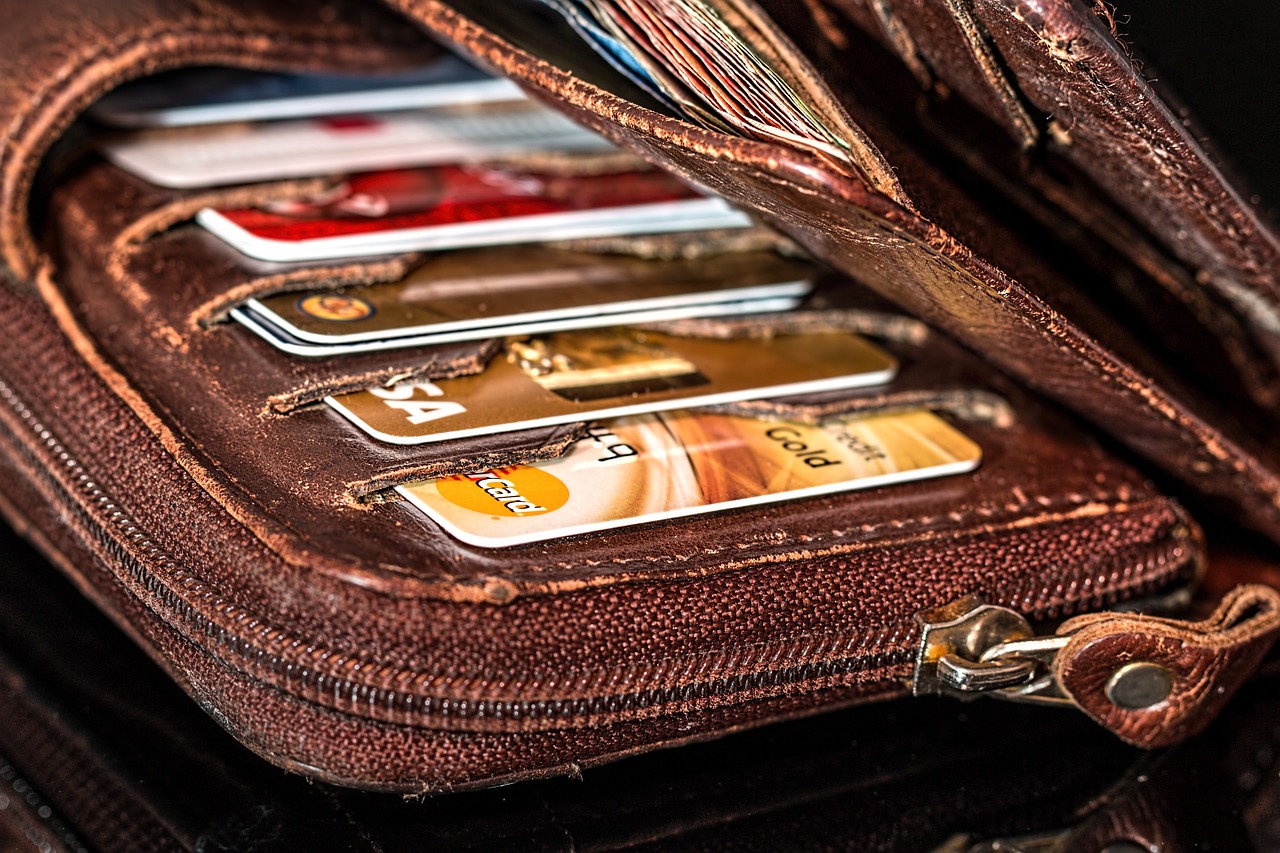
Types of Cryptocurrency Wallets
When diving into the world of cryptocurrency, one of the first things you'll encounter is the concept of wallets. But did you know that there are several types of cryptocurrency wallets, each designed to cater to different user needs and preferences? Understanding these types can significantly enhance your crypto experience, ensuring that you choose the right wallet for your unique situation. In this section, we will explore the most common types of cryptocurrency wallets, including hardware, software, mobile, and paper wallets, and highlight their unique features and use cases.
First up, we have hardware wallets. These are physical devices specifically designed to store your cryptocurrencies offline, which makes them one of the most secure options available. Imagine your crypto assets locked in a safe that only you can access! Hardware wallets are ideal for those who plan to hold their investments for the long term and want to minimize the risk of hacks and online threats. They typically come with robust security features, making them a favorite among serious investors.
Next, let's talk about software wallets. These wallets are applications that you can install on your computer or smartphone. They offer a balance of convenience and security, making them suitable for users who engage in frequent transactions. Software wallets can be categorized into desktop wallets and mobile wallets. Desktop wallets are installed on your computer, providing a secure way to manage your assets, while mobile wallets are designed for on-the-go access, allowing you to make transactions quickly from your smartphone. However, it’s essential to remember that while software wallets are user-friendly, they are also more vulnerable to malware and phishing attacks compared to hardware wallets.
For those who prefer a more traditional approach, there are paper wallets. A paper wallet is essentially a physical printout of your public and private keys, which means that your cryptocurrencies are stored offline. This method is highly secure as it eliminates the risk of online hacks, but it does come with its own set of challenges. For instance, if you lose the paper or it gets damaged, your funds could be lost forever. Therefore, paper wallets are often recommended for users who want to store their cryptocurrencies for an extended period without the need for frequent access.
In addition to these main types, it's worth noting that there are also multi-signature wallets and custodial wallets. Multi-signature wallets require multiple private keys to authorize a transaction, adding an extra layer of security, which is particularly useful for businesses or groups. On the other hand, custodial wallets are managed by third-party services, meaning they hold your private keys for you. While this can be convenient, it also means you have to trust the service provider with your assets.
To summarize, here’s a quick comparison of the different types of cryptocurrency wallets:
| Type of Wallet | Security Level | Best For |
|---|---|---|
| Hardware Wallet | High | Long-term investors |
| Software Wallet | Medium | Frequent transactions |
| Paper Wallet | High | Long-term storage |
| Multi-signature Wallet | Very High | Businesses/groups |
| Custodial Wallet | Medium | Convenience seekers |
Choosing the right wallet can significantly impact your cryptocurrency journey. Whether you prioritize security, convenience, or a balance of both, understanding the different types of wallets available will help you make an informed decision. So, which wallet will you choose to safeguard your crypto assets?
Here are some common questions regarding cryptocurrency wallets:
- What is the safest type of cryptocurrency wallet? Hardware wallets are generally considered the safest due to their offline storage.
- Can I use multiple wallets? Yes, many users opt for a combination of wallets to balance security and convenience.
- Are paper wallets still a good option? Yes, but they require careful handling to avoid loss or damage.
- What should I do if I lose my hardware wallet? If you have backed up your recovery phrase, you can restore your wallet on a new device.

Hardware Wallets
When it comes to securing your cryptocurrency investments, stand out as one of the most reliable options available. These physical devices are designed specifically to store your private keys offline, making them a fortress against online threats. Imagine your crypto assets as precious jewels; would you leave them out in the open, or would you lock them away in a safe? That’s precisely what hardware wallets do for your digital currency. They provide an extra layer of security that software wallets simply can’t match.
One of the key benefits of hardware wallets is their offline storage capability. Since your private keys are stored on the device itself and are never exposed to the internet, the risk of hacks, phishing attacks, or malware is significantly reduced. This makes hardware wallets particularly suitable for individuals who plan to hold their cryptocurrencies for the long term, often referred to as "HODLers." By keeping your assets offline, you can rest easy knowing that your investment is well-protected.
Moreover, hardware wallets are designed with user experience in mind. Many of them come with intuitive interfaces that make it easy to send and receive cryptocurrencies. For instance, when you want to make a transaction, you simply connect the wallet to your computer or mobile device, enter your PIN, and authorize the transfer. This seamless process ensures that even those who are new to cryptocurrency can navigate their wallets without feeling overwhelmed.
However, it’s essential to choose the right hardware wallet for your needs. Here are some factors to consider:
- Security Features: Look for wallets that offer robust security measures such as encryption, two-factor authentication, and recovery options.
- Compatibility: Ensure that the wallet supports the cryptocurrencies you plan to store.
- Usability: A user-friendly interface can make a significant difference in your overall experience.
To help you make an informed choice, here’s a quick comparison of some of the top hardware wallets available:
| Wallet Name | Security Features | Supported Cryptocurrencies | Price |
|---|---|---|---|
| Ledger Nano X | Encryption, Bluetooth, 2FA | Over 1800 | $149 |
| Trezor Model T | Encryption, Touchscreen, 2FA | Over 1600 | $219 |
| KeepKey | Encryption, 2FA | Over 40 | $49 |
In conclusion, hardware wallets are an essential tool for anyone serious about cryptocurrency investment. They not only offer enhanced security but also provide a user-friendly experience that can cater to both newcomers and seasoned investors alike. By choosing the right hardware wallet, you can safeguard your assets and engage more confidently in the world of cryptocurrency.
Q: What is a hardware wallet?
A: A hardware wallet is a physical device that securely stores your cryptocurrency's private keys offline, protecting them from online threats.
Q: Are hardware wallets safe?
A: Yes, hardware wallets are considered one of the safest options for storing cryptocurrencies due to their offline storage and advanced security features.
Q: Can I use a hardware wallet with multiple cryptocurrencies?
A: Most hardware wallets support multiple cryptocurrencies, but it's essential to check the compatibility before purchasing.
Q: What happens if I lose my hardware wallet?
A: Most hardware wallets come with recovery options, allowing you to restore your assets using a backup seed phrase.
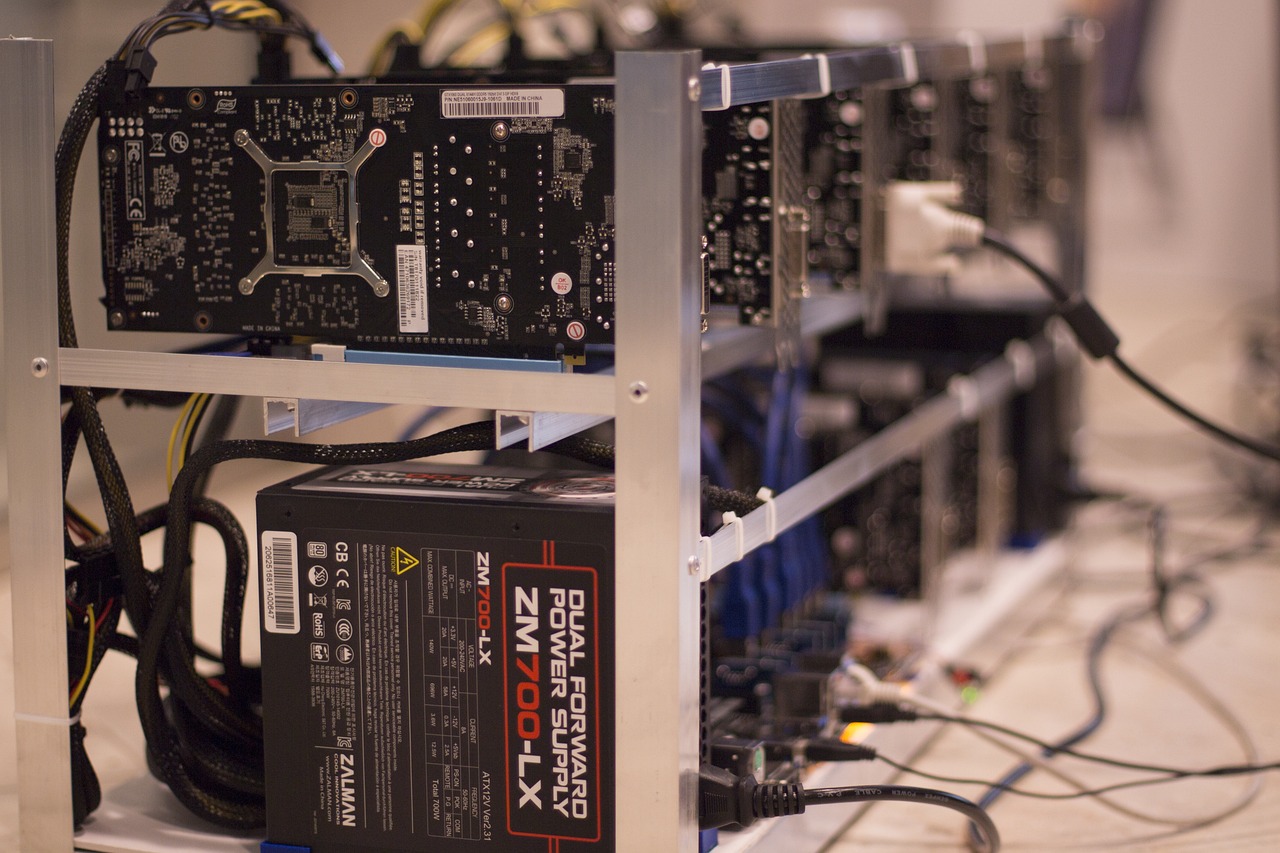
Security Features
When it comes to cryptocurrency, security is paramount. Hardware wallets stand out in the crowded digital landscape primarily because of their robust security features. Unlike software wallets that are connected to the internet, hardware wallets store your private keys offline, ensuring that they are less vulnerable to hacking and malware attacks. This offline storage is akin to keeping your cash in a safe rather than in your pocket where it can be easily snatched. But what exactly makes these wallets a fortress for your digital assets?
One of the key security features of hardware wallets is encryption. This means that your sensitive data is scrambled and can only be accessed with a specific key. Think of it as a secret code that only you possess. Moreover, many hardware wallets implement two-factor authentication (2FA), adding an extra layer of security. This is similar to needing both a key and a password to access a vault—one alone isn’t enough. With 2FA, even if someone manages to get hold of your wallet, they would still need that second form of verification to access your funds.
Another crucial aspect is the recovery options provided by hardware wallets. In the unfortunate event that your device is lost or damaged, most wallets allow you to recover your funds using a recovery seed phrase—a series of words that you must keep secure. This feature is essential because it ensures that you won’t lose access to your assets due to hardware failure. Imagine having a backup key for your house; it’s a safety net that gives you peace of mind.
To illustrate the differences in security features among popular hardware wallets, here’s a brief comparison:
| Wallet | Encryption | 2FA | Recovery Options |
|---|---|---|---|
| Ledger Nano S | Yes | No | 12-word recovery phrase |
| Trezor Model T | Yes | Yes | 12-24 word recovery phrase |
| KeepKey | Yes | No | 12-word recovery phrase |
As you can see, while all these wallets offer encryption and recovery options, the presence of two-factor authentication in Trezor Model T provides an added layer of security, making it a strong contender for those prioritizing safety. Ultimately, the choice of a hardware wallet should align with your personal security needs, risk tolerance, and how you plan to manage your cryptocurrency.
In conclusion, the security features of hardware wallets are designed to protect your digital assets from various threats. By utilizing encryption, two-factor authentication, and robust recovery options, these wallets not only safeguard your investments but also enhance your overall confidence in engaging with the cryptocurrency market.
- What is a hardware wallet? A hardware wallet is a physical device used to store cryptocurrencies securely offline.
- How do hardware wallets ensure security? They use encryption, two-factor authentication, and recovery options to protect your assets.
- Can I recover my funds if I lose my hardware wallet? Yes, most hardware wallets provide a recovery seed phrase that allows you to recover your funds.
- Are hardware wallets the safest option for storing cryptocurrencies? Generally, yes, they are considered one of the safest methods due to their offline nature.

Best Hardware Wallets
When it comes to securing your cryptocurrency assets, choosing the right hardware wallet can make all the difference. In the ever-evolving world of digital currencies, hardware wallets stand out due to their robust security features and user-friendly interfaces. Let's dive into some of the available in the market today, helping you make an informed decision.
Firstly, one of the most popular choices among crypto enthusiasts is the Ledger Nano X. This wallet supports over 1,800 cryptocurrencies and offers Bluetooth connectivity, making it a great option for users who prefer mobile access. With its sleek design and high-security standards, including a secure chip and a user-friendly app, the Ledger Nano X has become a fan favorite.
Another excellent option is the Trezor Model T. Known for its intuitive touchscreen interface, the Trezor Model T supports a wide range of cryptocurrencies and provides top-notch security features. Its open-source firmware allows for transparency and community trust, while the recovery seed backup ensures that users can easily restore their wallets if needed.
For those looking for a more budget-friendly option, the Ledger Nano S is a fantastic choice. It may lack some of the advanced features of its counterparts, but it still offers strong security and supports over 1,500 cryptocurrencies. Its compact size and straightforward interface make it ideal for beginners who want to dip their toes into the crypto world without breaking the bank.
To help you compare these wallets, here’s a quick
| Wallet | Supported Cryptocurrencies | Key Features | Price |
|---|---|---|---|
| Ledger Nano X | 1,800+ | Bluetooth, Secure Chip | $149 |
| Trezor Model T | 1,600+ | Touchscreen, Open-Source | $219 |
| Ledger Nano S | 1,500+ | Compact Size, Affordable | $59 |
Each of these wallets has its own strengths, catering to different types of users. Whether you're a seasoned investor or a newcomer, selecting the right hardware wallet is crucial for safeguarding your digital assets. Always consider factors like security features, ease of use, and customer support when making your choice.
In conclusion, investing in a reliable hardware wallet is a step towards enhancing your overall crypto experience. With the right wallet, not only do you protect your assets, but you also gain peace of mind, allowing you to engage more freely in the exciting world of cryptocurrencies.
Here are some common questions that users have regarding hardware wallets:
- What is a hardware wallet? A hardware wallet is a physical device that securely stores your cryptocurrency private keys offline, providing enhanced security against hacks and malware.
- Are hardware wallets worth the investment? Yes, especially if you hold significant amounts of cryptocurrency. They offer superior security features compared to software wallets.
- Can I access my hardware wallet on multiple devices? Most hardware wallets allow you to connect to multiple devices, but it's important to ensure that your connection is secure.
- What happens if I lose my hardware wallet? If you lose your hardware wallet, you can recover your assets using the recovery seed that you set up when you initialized the wallet.
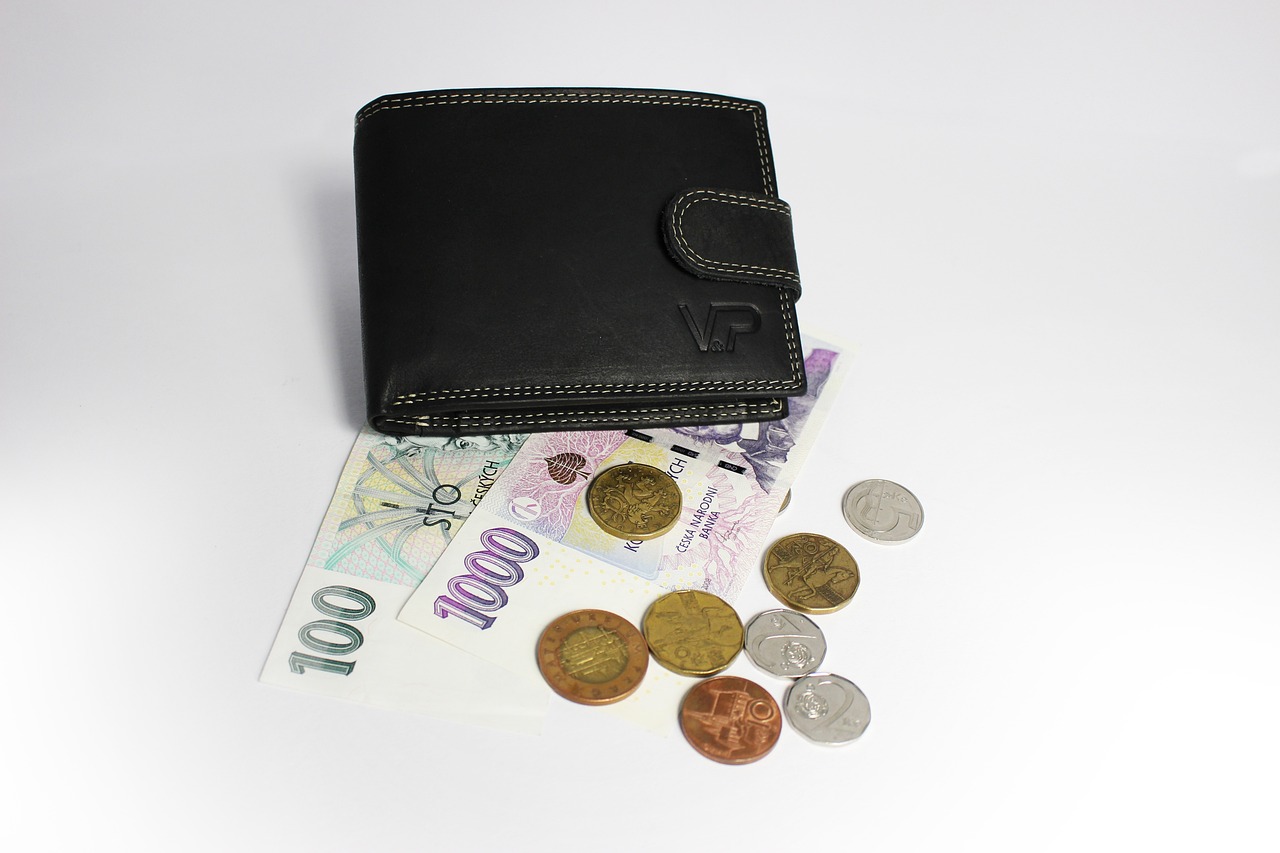
Software Wallets
When it comes to the world of cryptocurrency, are the go-to option for many users seeking convenience and accessibility. These wallets are applications that can be installed on desktop or mobile devices, allowing users to manage their digital assets with just a few clicks. Imagine having your entire crypto portfolio right at your fingertips—this is the allure of software wallets. They cater to both novice and experienced users, providing an easy entry point into the complex world of cryptocurrencies.
One of the most appealing aspects of software wallets is their ease of use. With intuitive interfaces and straightforward navigation, users can quickly send, receive, and store various cryptocurrencies. Whether you’re making a quick transaction at a coffee shop or trading on an exchange, software wallets streamline the process. For instance, many wallets offer features like QR code scanning, which allows users to make transactions without the hassle of typing long wallet addresses. This feature alone can save a lot of time and prevent errors, making the user experience much smoother.
However, while software wallets offer remarkable convenience, they do come with their own set of risks. Being connected to the internet, they are more vulnerable to hacking attempts compared to hardware wallets. Therefore, it’s crucial for users to take necessary precautions. Here are some tips to enhance security while using software wallets:
- Enable Two-Factor Authentication (2FA): This adds an extra layer of security by requiring a second form of identification when logging in.
- Keep Software Updated: Regular updates often include security patches that protect against vulnerabilities.
- Use Strong Passwords: A complex password can significantly reduce the chances of unauthorized access.
Moreover, software wallets can be categorized into two main types: desktop wallets and mobile wallets. Desktop wallets are installed on a personal computer and provide a robust solution for users who prefer to manage their assets from a single location. On the other hand, mobile wallets are designed for those who are always on the go, allowing users to access their funds anytime, anywhere. This flexibility is particularly appealing in today’s fast-paced environment.
Another noteworthy feature of software wallets is their ability to integrate with various cryptocurrency exchanges and platforms. This integration facilitates seamless trading and allows users to monitor market trends without switching between multiple applications. Imagine being able to buy, sell, and track your investments all in one place! This not only enhances user engagement but also encourages more frequent interactions with the crypto ecosystem.
In summary, software wallets play a pivotal role in the cryptocurrency landscape by offering users a blend of convenience, functionality, and accessibility. While they come with inherent risks, taking appropriate security measures can significantly mitigate these concerns. As the crypto world continues to evolve, software wallets will likely become even more sophisticated, catering to the diverse needs of users and enhancing their overall engagement with digital currencies.

User Experience and Interface Design
When it comes to cryptocurrency wallets, user experience (UX) and interface design play a crucial role in enhancing user engagement. Imagine trying to navigate a complex maze without a map; that’s how users feel when they encounter a poorly designed wallet. A well-structured interface not only makes the wallet easy to use but also encourages users to engage more frequently with their crypto assets. The design should be intuitive, allowing users to perform transactions, check balances, and manage their holdings with minimal effort.
One of the key elements of effective wallet design is the user-friendly interface. This means that even those who are not tech-savvy can navigate the wallet seamlessly. For instance, clear labels, logical categorization of functions, and a consistent layout can significantly reduce the learning curve for new users. Imagine walking into a store where everything is organized and easy to find; this is the kind of experience that a well-designed wallet aims to provide. Users should be able to locate features like sending or receiving cryptocurrencies without feeling overwhelmed or confused.
Moreover, a wallet that offers customizable features can greatly enhance user engagement. Customization allows users to tailor their experience according to their preferences, which can range from changing themes to configuring notification settings. For example, a user might prefer to receive alerts for price changes or transaction confirmations. By providing these options, wallets can cater to a broader audience, making them feel more in control of their crypto journey.
Another aspect to consider is the importance of feedback mechanisms within the wallet interface. Users should receive clear visual and audio feedback when they perform actions, such as sending or receiving funds. This could be as simple as a confirmation message or a sound alert. Such feedback reassures users that their actions have been successfully executed, which can build trust and confidence in using the wallet.
To illustrate the impact of design on user engagement, let's take a look at some statistics:
| Feature | Impact on User Engagement |
|---|---|
| User-Friendly Interface | Increases user retention by 30% |
| Customization Options | Boosts transaction frequency by 25% |
| Feedback Mechanisms | Enhances user satisfaction by 40% |
In conclusion, the design of cryptocurrency wallets is not just about aesthetics; it’s about creating an environment that fosters user engagement and satisfaction. As the crypto space continues to evolve, wallet developers must prioritize UX and interface design to keep users coming back. After all, in a world where every second counts, making transactions as smooth and straightforward as possible can make all the difference.
- What is the importance of user experience in crypto wallets?
User experience is vital as it determines how easily users can navigate and utilize the wallet. A positive experience encourages more frequent use and engagement.
- How can customization improve user engagement?
Customization allows users to tailor their wallet experience, making it more personal and relevant to their needs, which can lead to increased satisfaction and usage.
- What role do feedback mechanisms play in wallet design?
Feedback mechanisms provide users with assurance that their actions have been completed, enhancing trust and confidence in the wallet's functionality.

Importance of User-Friendly Interfaces
In the fast-paced world of cryptocurrency, where every second counts, the in wallets cannot be overstated. Imagine trying to navigate a complex maze while your prized digital assets are at stake; that’s what a poorly designed wallet feels like. A user-friendly interface acts as a guiding light, simplifying the intricate processes involved in managing cryptocurrencies. It transforms a potentially overwhelming experience into a seamless journey, allowing users to focus on what truly matters: their investments and transactions.
A wallet’s interface should be intuitive, enabling even the most novice users to engage with their assets confidently. When users encounter a well-organized dashboard, they can quickly access essential features such as sending, receiving, and exchanging cryptocurrencies. This ease of access not only boosts user satisfaction but also encourages frequent interactions with the wallet. After all, who wants to struggle with complicated navigation when they can effortlessly manage their portfolio with just a few clicks?
Furthermore, a user-friendly interface fosters trust. When users feel comfortable navigating their wallets, they are more likely to engage with the platform regularly. This sense of security is crucial in the volatile world of crypto, where every transaction carries weight. A wallet that prioritizes user experience can significantly enhance engagement levels, leading to more transactions and, ultimately, a more vibrant crypto ecosystem.
Additionally, customizable features play a vital role in enhancing user engagement. When users can tailor their wallet experience—whether it’s changing themes, adjusting notifications, or organizing their portfolio according to personal preferences—they feel more connected to the platform. This personal touch can make users more inclined to explore the wallet’s functionalities, leading to increased usage and a deeper understanding of the crypto landscape.
In conclusion, the role of user-friendly interfaces in cryptocurrency wallets is paramount. They not only simplify the user experience but also build trust and encourage engagement. As the crypto market continues to evolve, wallets that prioritize intuitive design will undoubtedly stand out, attracting users who seek both functionality and ease of use. In a world where complexity often reigns, a user-friendly wallet can be the difference between a satisfied user and a frustrated one.
- What is a cryptocurrency wallet? A cryptocurrency wallet is a digital tool that allows users to store, manage, and transact their cryptocurrencies securely.
- How do user-friendly interfaces benefit crypto wallets? They simplify navigation, enhance user satisfaction, and encourage more frequent transactions.
- Can I customize my wallet interface? Many wallets offer customizable features, allowing users to tailor their experience to their preferences.
- Why is trust important in cryptocurrency wallets? Trust is crucial because the crypto market is volatile, and users need to feel secure when managing their assets.
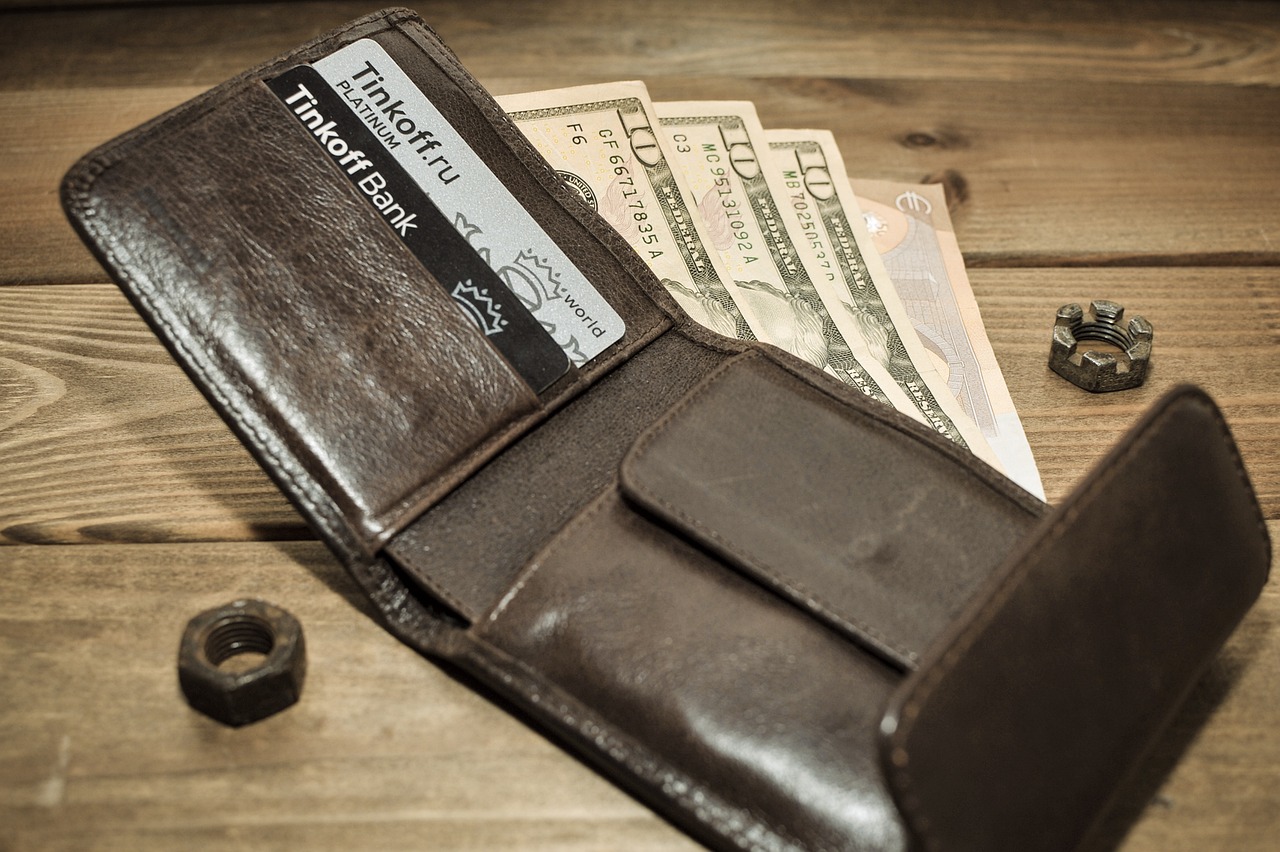
Customizable Features
In the ever-evolving world of cryptocurrency, in wallets are becoming essential for enhancing user engagement. Just like how a tailor-made suit fits perfectly, customizable wallets allow users to adapt their experience to suit their unique preferences and needs. Imagine being able to tweak your wallet's interface, choose your preferred currency displays, or even set up personalized alerts for market movements. These features not only make the wallet feel more personal but also improve the overall user experience.
One of the most appealing aspects of customizable wallets is the ability to manage notifications. Users can choose to receive alerts about transaction confirmations, price changes, or even news updates related to their favorite cryptocurrencies. This level of personalization ensures that users stay informed without feeling overwhelmed by unnecessary information. Furthermore, the option to customize security settings gives users peace of mind. For example, users can set transaction limits, enable two-factor authentication, or even choose specific security questions that resonate with them.
Moreover, customizable themes and layouts can significantly enhance user satisfaction. A wallet that allows users to select color schemes or rearrange dashboard elements can create a more enjoyable experience. Just like how a well-designed website can keep visitors engaged, a visually appealing wallet interface can encourage users to interact more frequently. Users are more likely to explore features, make transactions, and engage with their cryptocurrencies when they feel comfortable and in control of their environment.
Additionally, some wallets offer the ability to create multiple profiles or accounts within the same application. This is particularly useful for users who manage various investments or wish to keep personal and business transactions separate. By allowing users to switch between profiles effortlessly, these wallets cater to a broader audience, enhancing overall engagement.
In summary, customizable features in cryptocurrency wallets are not just a luxury; they are a necessity for fostering user engagement. By allowing users to tailor their experience, wallets can transform from simple storage tools into dynamic platforms that enhance the crypto journey. As the cryptocurrency landscape continues to grow, the demand for such features will undoubtedly increase, pushing developers to innovate and provide even more personalized options.
- What are customizable features in cryptocurrency wallets?
Customizable features allow users to modify their wallet experience, including interface design, notification settings, and security options to suit personal preferences. - Why are customizable features important?
They enhance user engagement by making the wallet more personal and user-friendly, encouraging frequent transactions and interactions. - Can I change the layout of my wallet?
Many wallets offer options to rearrange dashboard elements and choose different themes to improve user experience. - How do customizable security settings work?
Users can set transaction limits, enable two-factor authentication, and choose security questions, allowing for a more secure and personalized experience.
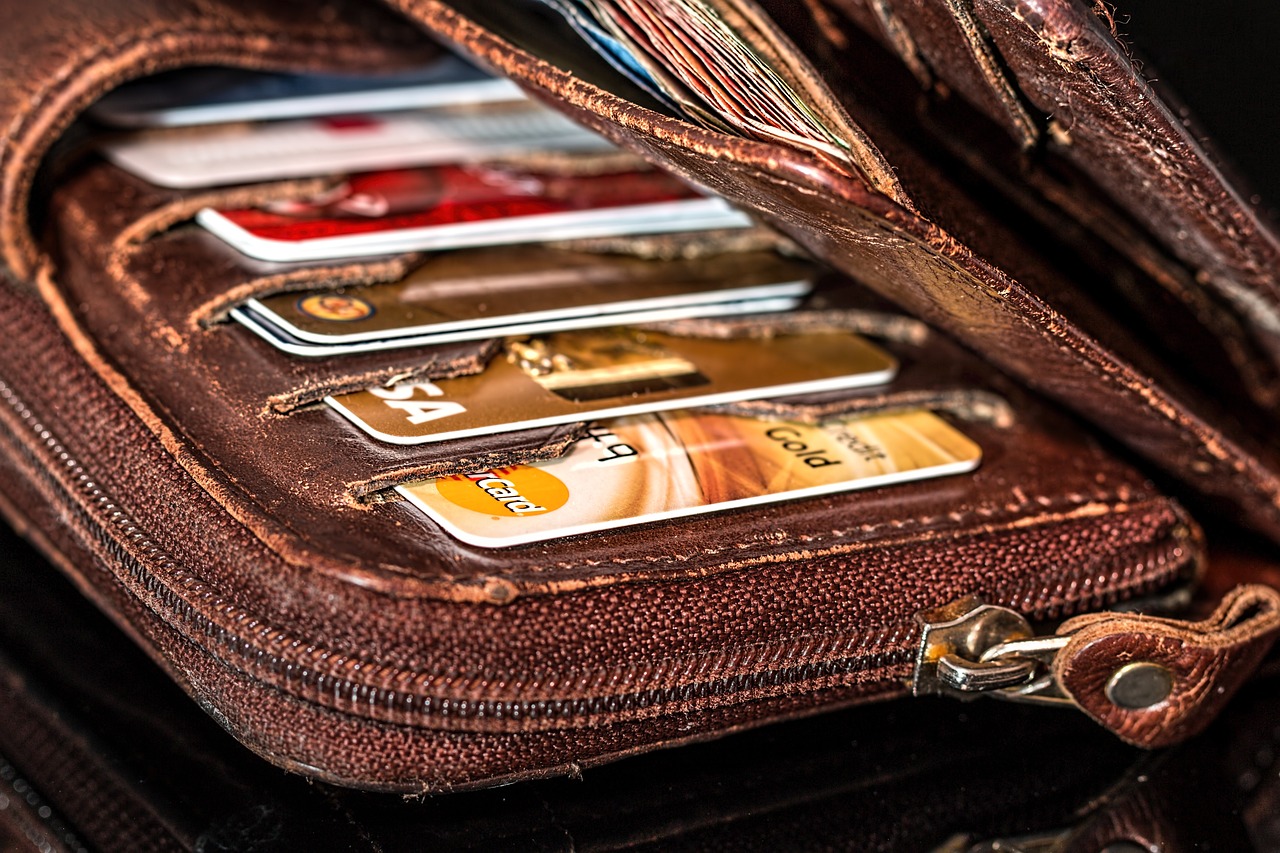
The Future of Crypto Wallets
The world of cryptocurrency is evolving at a breakneck pace, and with it, the future of crypto wallets is brimming with potential. As we look ahead, several trends are emerging that promise to revolutionize how users interact with their digital assets. One of the most exciting developments is the integration of wallets with decentralized finance (DeFi) platforms. This evolution is not just about holding crypto; it's about transforming wallets into comprehensive financial tools that empower users to manage their assets more effectively.
Imagine a wallet that does more than just store your Bitcoin or Ethereum. With the rise of DeFi, wallets are becoming gateways to a plethora of financial services, including lending, staking, and yield farming. This means that users can leverage their crypto holdings to earn passive income or access loans without the need for traditional banks. As wallets become more integrated with these platforms, we can expect user engagement to skyrocket, as individuals take advantage of the myriad opportunities available to them.
Moreover, advancements in technology are set to play a crucial role in shaping the future of crypto wallets. For instance, the incorporation of biometric security features, such as fingerprint scanning or facial recognition, will enhance security while providing a seamless user experience. Imagine unlocking your wallet with just a glance! This level of convenience will likely encourage more users to adopt cryptocurrencies, as the barriers to entry are lowered.
Artificial intelligence (AI) is another game-changer on the horizon. By leveraging AI, wallets can offer personalized financial advice, helping users make informed decisions about their investments. Picture a wallet that analyzes your spending habits and suggests optimal times to buy or sell based on market trends. This level of sophistication could turn crypto wallets into essential financial companions, guiding users through the often-turbulent waters of cryptocurrency trading.
As we venture further into the future, the design and user interface of wallets will also become increasingly important. A wallet that is easy to navigate and visually appealing will attract more users and keep them engaged. Developers are likely to focus on creating intuitive designs that cater to both novice and experienced users. Features like customizable dashboards and easy access to transaction history will enhance the overall user experience, making it more enjoyable to manage digital assets.
In conclusion, the future of crypto wallets is not just about storing cryptocurrencies; it's about creating a holistic financial ecosystem that empowers users. With advancements in technology, integration with DeFi, and a focus on user experience, wallets are set to become indispensable tools in the crypto space. As these changes unfold, we can expect to see a surge in user engagement, transforming how individuals interact with their digital wealth.
- What are the main features to look for in a crypto wallet?
When choosing a crypto wallet, consider security features, ease of use, compatibility with various cryptocurrencies, and customer support.
- How do decentralized finance (DeFi) platforms work with wallets?
DeFi platforms allow users to lend, borrow, and trade cryptocurrencies directly from their wallets, eliminating the need for intermediaries.
- What is biometric security in crypto wallets?
Biometric security uses unique physical characteristics, such as fingerprints or facial recognition, to secure access to your wallet, enhancing safety and convenience.
- Will the user interface of crypto wallets improve?
Yes, as more users enter the crypto space, developers are focusing on creating user-friendly interfaces that simplify navigation and enhance the overall experience.

Integration with DeFi
The integration of cryptocurrency wallets with Decentralized Finance (DeFi) platforms marks a significant evolution in the crypto space, creating a bridge between traditional finance and the innovative world of blockchain technology. Imagine having the power to access a myriad of financial services directly from your wallet—no banks, no intermediaries, just you and your assets. This transformation not only enhances user engagement but also broadens the horizons of what users can achieve with their cryptocurrencies.
DeFi is all about providing financial services through decentralized protocols, and wallets are at the heart of this revolution. By integrating with DeFi platforms, wallets empower users to lend, borrow, trade, and earn interest on their crypto holdings seamlessly. For instance, users can connect their wallets to decentralized exchanges (DEXs) to trade cryptocurrencies without the need for a centralized authority. This not only increases the speed of transactions but also significantly reduces fees, making it a win-win situation for users.
Moreover, the integration of wallets with DeFi platforms enhances user experience by offering a unified interface where users can manage their assets, view their portfolio performance, and execute transactions—all in one place. With the rise of yield farming and liquidity pools, users are now more inclined to utilize their wallets for earning passive income. This shift in behavior indicates a growing trend where wallets are not just storage solutions but essential tools for financial growth.
As we look towards the future, the potential for further integration is enormous. Wallets are likely to evolve, incorporating features that allow users to interact with various DeFi protocols effortlessly. Imagine a wallet that alerts you when interest rates rise on a lending platform or one that automatically reallocates your assets to maximize returns based on market trends. This level of automation and intelligence could redefine user engagement in the crypto space.
To illustrate the impact of wallet integration with DeFi, consider the following table that compares traditional finance services with their DeFi counterparts:
| Traditional Finance | Decentralized Finance (DeFi) |
|---|---|
| Banking Institutions | Peer-to-Peer Lending |
| Centralized Exchanges | Decentralized Exchanges (DEXs) |
| Fixed Interest Rates | Dynamic Yield Farming |
| High Transaction Fees | Low or No Transaction Fees |
In conclusion, the integration of wallets with DeFi platforms is not just a trend; it is a paradigm shift that enhances user engagement and opens up a world of financial possibilities. As technology continues to advance, we can expect wallets to become even more sophisticated, offering features that cater to the evolving needs of users in the DeFi landscape. This evolution will not only empower individual users but also contribute to the broader adoption of cryptocurrencies and decentralized finance as a whole.
- What is a DeFi wallet? A DeFi wallet is a cryptocurrency wallet that allows users to interact with decentralized finance platforms, enabling them to lend, borrow, trade, and earn interest on their assets.
- How do I connect my wallet to a DeFi platform? You can connect your wallet to a DeFi platform by selecting the 'Connect Wallet' option on the platform's interface and following the prompts to authorize the connection.
- Are DeFi wallets secure? Yes, DeFi wallets can be secure, especially hardware wallets. However, users should always follow best practices for security, such as enabling two-factor authentication and keeping their private keys safe.
- Can I use my wallet for both DeFi and traditional transactions? Yes, many wallets support both DeFi transactions and traditional cryptocurrency transactions, providing a versatile solution for managing your assets.

Emerging Technologies
This article explores how cryptocurrency wallets contribute to user engagement, providing insights into their functionalities, benefits, and impact on the overall crypto experience for users.
Understanding why crypto wallets are essential for users, including their role in security, transaction management, and facilitating access to various cryptocurrencies.
An overview of different types of wallets available, such as hardware, software, mobile, and paper wallets, highlighting their unique features and use cases.
Exploring the benefits of hardware wallets, including enhanced security measures, offline storage, and their suitability for long-term crypto holdings.
A detailed look at the security features of hardware wallets, including encryption, two-factor authentication, and recovery options to safeguard user assets.
A comparison of the top hardware wallets available in the market, discussing their pros, cons, and user experiences to help users make informed choices.
Discussing software wallets, including desktop and mobile options, their convenience, and how they cater to users seeking ease of access and frequent transactions.
Examining how wallet design impacts user engagement, focusing on intuitive interfaces, ease of navigation, and overall user satisfaction.
Highlighting the significance of user-friendly interfaces in wallets, which can enhance user engagement and encourage more frequent transactions.
Discussing how customizable features in wallets can improve user engagement by allowing users to tailor their experience according to their preferences.
Speculating on the future trends in cryptocurrency wallets, including advancements in technology, integration with decentralized finance (DeFi), and the potential for broader adoption.
Exploring how wallets are evolving to integrate with decentralized finance platforms, enhancing user engagement through increased functionality and access to diverse financial services.
As we look to the future of cryptocurrency wallets, it's impossible to ignore the impact of . These innovations are not only enhancing security but also improving the overall user experience. For instance, biometric security features such as fingerprint and facial recognition are becoming more prevalent in wallet applications. This technology offers a seamless and secure way for users to access their funds without the hassle of remembering complex passwords.
Moreover, the integration of artificial intelligence (AI) is revolutionizing how wallets function. AI can analyze user behavior to provide personalized suggestions, enhancing the user experience and engagement. Imagine a wallet that learns your spending habits and recommends optimal times to make transactions or alerts you to potential security threats based on your activity. This level of personalization can make users feel more in control and connected to their financial assets.
Additionally, we are witnessing the rise of smart contracts within wallets. These self-executing contracts with the terms of the agreement directly written into code can automate transactions and create trust among users without the need for intermediaries. This not only speeds up the transaction process but also reduces costs, making crypto more accessible to everyone.
To summarize, the future of crypto wallets is bright, with emerging technologies paving the way for enhanced security, personalization, and automation. As these technologies continue to evolve, they promise to make the crypto experience more engaging and user-friendly.
- What is a cryptocurrency wallet? A cryptocurrency wallet is a digital tool that allows users to store, send, and receive cryptocurrencies securely.
- Are hardware wallets better than software wallets? Hardware wallets generally offer enhanced security since they store your assets offline, making them less vulnerable to hacking compared to software wallets.
- How do biometric security features work in crypto wallets? Biometric security features use unique physical traits, like fingerprints or facial recognition, to authenticate users and provide a secure way to access their wallets.
- What role does artificial intelligence play in crypto wallets? AI can analyze user behavior to enhance personalization, provide transaction recommendations, and improve security by detecting unusual patterns.
Frequently Asked Questions
- What is a cryptocurrency wallet?
A cryptocurrency wallet is a digital tool that allows you to store, send, and receive cryptocurrencies. Think of it like a bank account for your digital assets, where you can manage your funds securely and conveniently.
- Why are crypto wallets important?
Crypto wallets are essential because they provide security for your assets, enable transaction management, and give you access to various cryptocurrencies. Without a wallet, you can't effectively interact with the cryptocurrency ecosystem.
- What are the different types of cryptocurrency wallets?
There are several types of cryptocurrency wallets, including hardware wallets, software wallets, mobile wallets, and paper wallets. Each type has unique features and is suited for different use cases, depending on your needs for security and convenience.
- How do hardware wallets enhance security?
Hardware wallets enhance security by storing your private keys offline, making them less susceptible to hacks and malware. They often include additional security features like encryption and two-factor authentication, providing an extra layer of protection for your assets.
- What are the best hardware wallets available?
Some of the best hardware wallets include Ledger Nano S, Trezor Model T, and KeepKey. Each wallet has its pros and cons, so it's crucial to compare their features, user experiences, and security measures to find the one that suits your needs.
- What are software wallets, and how do they work?
Software wallets are applications that run on your computer or mobile device, allowing you to access your cryptocurrencies easily. They offer convenience for frequent transactions but may not provide the same level of security as hardware wallets.
- How does user experience impact wallet engagement?
User experience plays a significant role in wallet engagement. A well-designed, intuitive interface can make it easier for users to navigate and manage their assets, leading to more frequent transactions and a better overall experience.
- What are customizable features in wallets?
Customizable features allow users to tailor their wallet experience according to personal preferences, such as changing themes, setting transaction alerts, or organizing assets. This personalization can enhance user engagement by making the wallet feel more aligned with the user's needs.
- What is the future of cryptocurrency wallets?
The future of cryptocurrency wallets looks promising, with advancements in technology, integration with decentralized finance (DeFi), and the potential for broader adoption. We can expect wallets to evolve, offering more functionalities and improved security measures.
- How are wallets integrating with DeFi?
Wallets are increasingly integrating with DeFi platforms, enabling users to access a wide range of financial services, such as lending, borrowing, and trading. This integration enhances user engagement by providing more opportunities to utilize their assets effectively.
- What emerging technologies will shape the future of wallets?
Emerging technologies like biometric security and artificial intelligence are set to shape the future of crypto wallets. These innovations could improve security and user experiences, making wallets even more user-friendly and secure.


